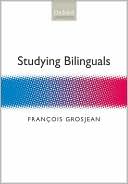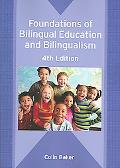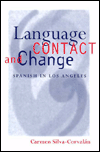Studying Bilinguals
Search in google:
Even though more than half the world's population is bilingual, the study of bilinguals has lagged behind that of monolinguals. With this book, which draws on twenty-five years of the author's research, François Grosjean contributes significantly to redressing the balance. The volume covers four areas of research: the definition and characterization of the bilingual person, the perception and production of spoken language by bilinguals, the sign-oral bilingualism of the Deaf, and methodological and conceptual issues in research on bilingualism. While the author takes a largely psycholinguistic approach, his acute linguistic and sociolinguistic awareness is evident throughout and especially so in his reflections on what it means to be bilingual and bicultural. The book also defends increased co-operation among researchers in connecting fields such as the language sciences and the neurosciences.
Introduction 1The Bilingual PersonA Wholistic View of Bilingualism 9The monolingual (or fractional) view of bilingualism 10The bilingual (or wholistic) view of bilingualism 13The Complementarity Principle and Language Restructuring 22The complementarity principle 22Language restructuring 26Language ModeThe Bilingual's Language Modes 37Language mode 39Evidence for language mode 46Language mode as a confounding and a control variable 54Further research on language mode 59Manipulating Language Mode 67Production studies 67Perception studies 77The Base-language EffectThe Base-language Effect in Speech Perception 88The PTLD study 89The gating studies 91The categorical perception study 95The naming study 96Base-language Effect and Categorical Perception 99Experiment 1: Identification and discrimination of between-language series in isolation 103Experiment 2: Identification of between-language series in English and French contexts 110General discussion 115Is There a Base-language Effect in Speech Production? 118The phonetics of code-switching 118The prosody of code-switching 130Spoken Word Recognition in BilingualsThe Gender Marking Effect in Bilinguals 139Experiment 1: Early bilinguals 142Experiment 2: Late bilinguals 150General discussion 155The Role of Guest-Word Properties 159Method 165Results and discussion 171Elements of a model of guest-word recognition 194The Lewy and Grosjean BIMOLA Model 201What does a model of bilingual lexical access have to account for? 202General presentation of the model 203Specific characteristics 205A first assessment of the model 208Biculturalism, Bilingualism, and DeafnessThe Bicultural Person: A Short Introduction 213Characterizing the bicultural person 214Additional points 216Identity and biculturalism 218The Bilingualism and Biculturalism of the Deaf 221The Deaf bilingual 221The Deaf bicultural 227The Deaf child 230Methodological Issues in Bilingualism ResearchMethodological and Conceptual Issues 241Participants 243Language mode 251Stimuli 258Tasks 261Models 265Imaging Bilinguals 273Summary of the article 273Commentary 275Response 277Reply to the response 280List of publications on bilingualism and biculturalism by Francois Grosjean 284References 291Index 309








